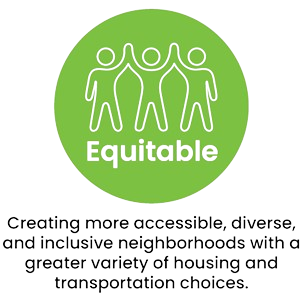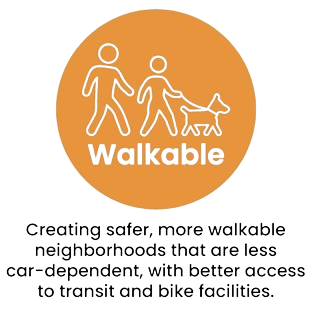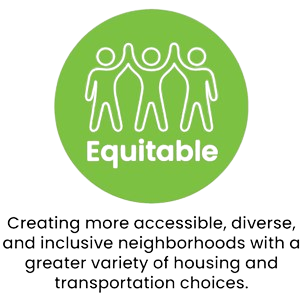Livable Places
Chapter 42 & 26 Development Incentives
About Livable Places
Houston City Council approved the Livable Places Housing Recommendations in September 2023 to update portions of the City’s residential development regulations that will expand the types of homes that are built to meet the needs of all Houstonians. The changes focus on walkability, affordability and equity. This package of ordinance amendments reflects three years of collaboration with the Livable Places Action Committee and stakeholders across the city. The rules became effective on Monday, November 27, 2023.
User Guide
The Livable Places User Guide was created to serve as a valuable tool for property owners to
visualize the four housing types highlighted in Livable Places ordinance amendments.
The Guide describes each type, provides photographic examples, and presents design concepts for a range of lot configurations.
The Livable Places initiative was launched in 2020 by the Planning & Development Department to diversify the variety and affordability
of homes built in Houston. The changes incentivize smaller neighborhood-scale homes such as garage apartments, courtyard style developments
and other developments of eight units or less. They also incentivize residential development that improves walkability and creates safer pedestrian spaces.
The changes to Chapters 42 and 26 of the Code of Ordinances addressed four main areas:
- Second Dwelling Unit Allows this housing type to be larger and parking based on the unit size where deed restrictions do not prohibit their construction.
-
Multi-Unit Residential Brings back this affordable housing type which is small scale 3–8-unit apartments with a height restriction to fit better within neighborhoods.
-
Courtyard Style Development: Promotes this housing type where lots are located around a common courtyard, and do not require street frontage. The proposal includes green space requirement per lot, parking could be separate from the units and height restriction so that homes are at neighborhood scale.
-
Small Lot Development: Incentivizes this housing type where lots take rear access or shared access to reduce the number of times pedestrians come in potential conflict with automobiles. In addition, these regulations help the redevelopment be more walkable by reducing the driveway widths and preventing vehicles from hanging into the sidewalk.




